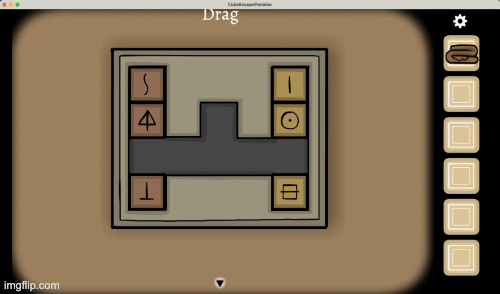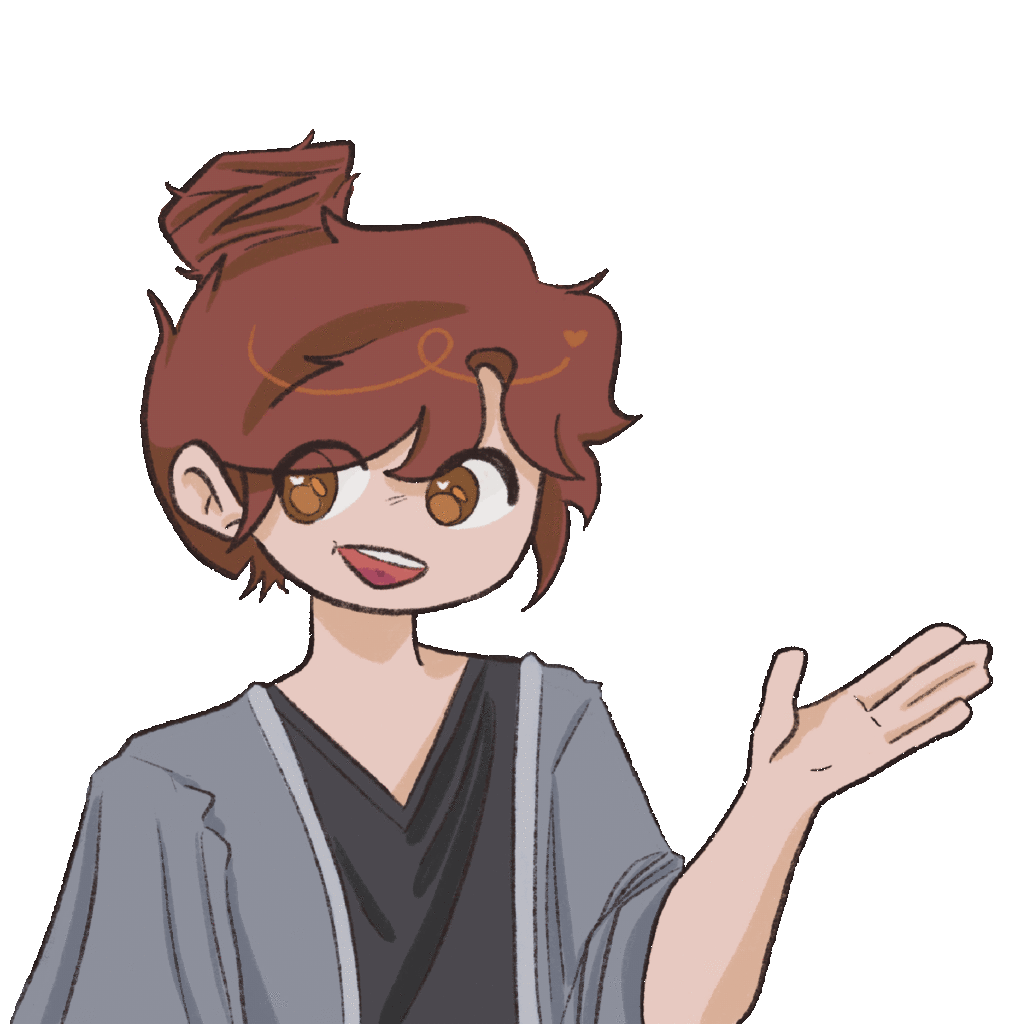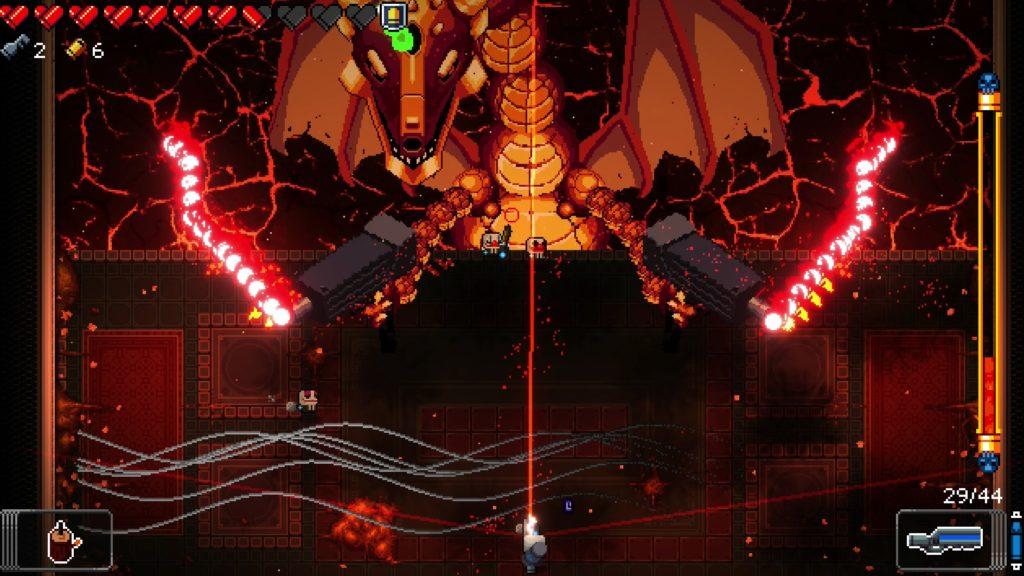For this week’s critical play, I chose Cube Escape: Paradox. This game was created by Rusty Lake, and is available on Windows, Mac OS, and Android. The target audience is players who enjoy point-n-click mystery games and are mature enough (ages 13+) to handle psychological horror elements and depictions of violence (blood, murder, etc.).
The game starts off with the protagonist, a male detective, having no recollection of how he arrived at his current location. Through simple mechanics, the player navigates using only their mouse as they click through different rooms in order to gather objects as resources that can be used to solve puzzles and achieve their primary objective: to untangle the secrets behind the protagonist’s—and the mysterious woman’s—past. Like other games in the genre, this game is single-player, and the plot progresses via embedded narrative: when the player clicks on and gathers items, they understand implicitly (and are sometimes prompted explicitly) that they should be used to interact with other objects in each of the rooms to drive the narrative forward. When the player successfully solves a puzzle, the game will usually reward them by either directly revealing aspects of the plot or giving them an item that drives the plot forward. This procedural loop is how the game progresses.

Figure 1: Nine frame GIF demonstrating how gathering objects (cigar & jacket) is used to solve the puzzle. The objects interact with the protagonist and triggers the woman’s appearance while giving the player a hint about the next course of action, driving the plot forward.
The photo puzzle in the first part of the game is a good example of an overarching narrative metapuzzle. Most of the other puzzles in this part of the game are small and isolated (opening cabinets and drawers, searching lights), with just one or two clicks needed to produce an item that can be used for another puzzle. The photo puzzle, on the other hand, needs to be revisited each time the player gathers the outputs of other puzzles, serving as a marker of game progression. Upon completion, it not only provides the player with clues to solve another puzzle (typewriter) but establishes the narrative by revealing that the photo is of both the protagonist and the woman he was following or investigating. As you interact with the typewriter, it produces flashback images, providing some context to the protagonist’s backstory while not revealing too much, which keeps the player motivated to continue investigating.

Figure 2: Twenty-one frame GIF showing the gathering of photo pieces, the reconstruction of the photo, and the flashback images shown to the player after entering the phrase on the back of the photo “the woman” into the typewriter.
The architecture of the setting controls the story in several ways. One of the more important ways is that it clearly delineates the boundaries of exploration. There are a limited number of rooms that the player can navigate through so there is no risk of the player getting lost spatially. In each room there are multiple interactable objects, some of which trigger mini-puzzles or introduce interactable sub-objects (e.g. dressers with multiple locked drawers). The challenge comes from locating these objects—some can be small and are not immediately obvious as something to click on—and knowing what items in your inventory can be used to interact with them.

Figure 3: Four frame GIF showing different drawers of a dresser as an example of sub-objects within one zoomed-in object.
Furthermore, environmental storytelling is a big factor in this game. The soft yet tense music combined with rooms devoid of other players or human NPCs, but filled with miscellaneous objects, produces an ominous atmosphere, especially when combined with intermittent disturbing imagery that becomes more prevalent when the plot progresses. As the player clicks through objects to solve puzzles, there is a sense of foreboding; the player feels like they are getting closer to uncovering an unsettling plot point. To add onto my point in the previous paragraph, I found that when I got stuck on where to go, I started spam-clicking on objects in the hopes that it would trigger a hint. This frantic searching further contributes to the narrative and atmospheric dynamics generated by the mechanics mentioned earlier. The game clearly uses sensation (atmospheric music, disturbing imagery), narrative (mysterious backstory that needs to be unraveled), and discovery (finding objects, solving puzzles, uncovering secrets and plot points) as its core aesthetics.



Figures 4-6: Embedded narrative examples. The first two images are of a pamphlet implying that the protagonist has had to be treated for mental health issues. The third image is of a keyhole you can look through that reveals the woman (and in a different instance, a ghastly black figure) in it.
There are a few accessibility barriers present in this game, though they seem to be issues that exist in the point-n-click mystery genre as a whole. The game is heavily visual and text-based—there is no dialogue present—meaning players that are vision-impaired will have trouble navigating through the spaces, gathering the necessary objects, and using them in the proper order to solve puzzles. Additionally, the audio does not really have a sense of directionality, meaning you cannot navigate to where you need to go spatially using audio cues. To mitigate these issues, the designer may want to consider text-to-speech narration and incorporate audio cues for clicking on the right/wrong object, navigating through rooms, interacting with puzzles, etc.

Figure 7: Three-frame GIF of a drag-and-slide puzzle that relies on visually knowing what symbols are marked on the tile.




